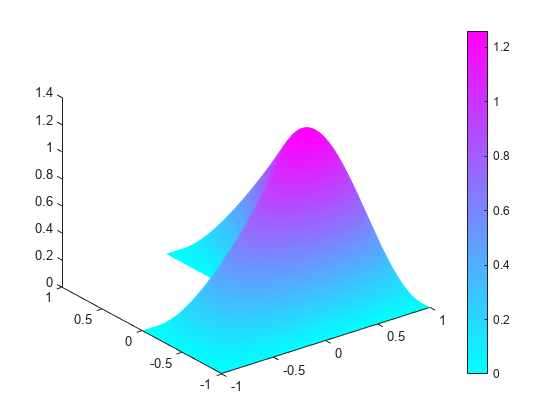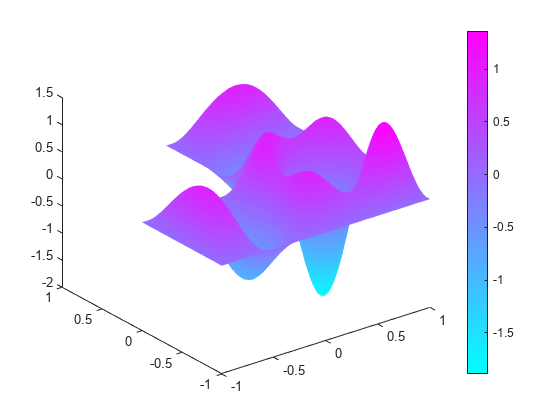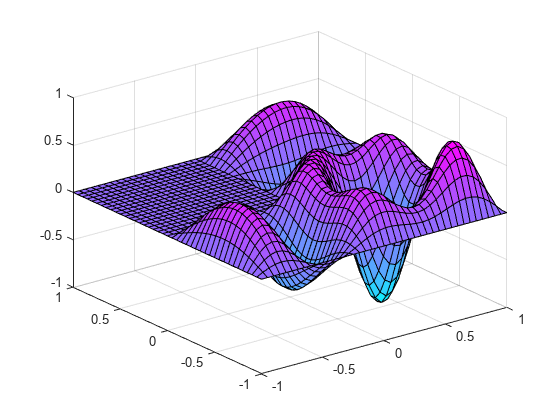Eigenvalues and Eigenmodes of L-Shaped Membrane
This example shows how to calculate eigenvalues and eigenvectors. The eigenvalue problem is . This example computes all eigenmodes with eigenvalues smaller than 100.
Create a model and include this geometry. The geometry of the L-shaped membrane is described in the file lshapeg.
model = createpde; geometryFromEdges(model,@lshapeg);
Set zero Dirichlet boundary conditions on all edges.
applyBoundaryCondition(model,"dirichlet", ... Edge=1:model.Geometry.NumEdges, ... u=0);
Specify the coefficients for the problem: d = 1 and c = 1. All other coefficients are equal to zero.
specifyCoefficients(model,m=0,d=1,c=1,a=0,f=0);
Set the interval [0 100] as the region for the eigenvalues in the solution.
r = [0 100];
Create a mesh and solve the problem.
generateMesh(model,Hmax=0.05); results = solvepdeeig(model,r);
There are 19 eigenvalues smaller than 100.
length(results.Eigenvalues)
ans = 19
Plot the first eigenmode and compare it to the MATLAB's membrane function.
u = results.Eigenvectors; pdeplot(model,XYData=u(:,1),ZData=u(:,1));

figure membrane(1,20,9,9)

Eigenvectors can be multiplied by any scalar and remain eigenvectors. This explains the difference in scale that you see.
membrane can produce the first 12 eigenfunctions for the L-shaped membrane. Compare the 12th eigenmodes.
figure pdeplot(model,XYData=u(:,12),ZData=u(:,12));

figure membrane(12,20,9,9)
